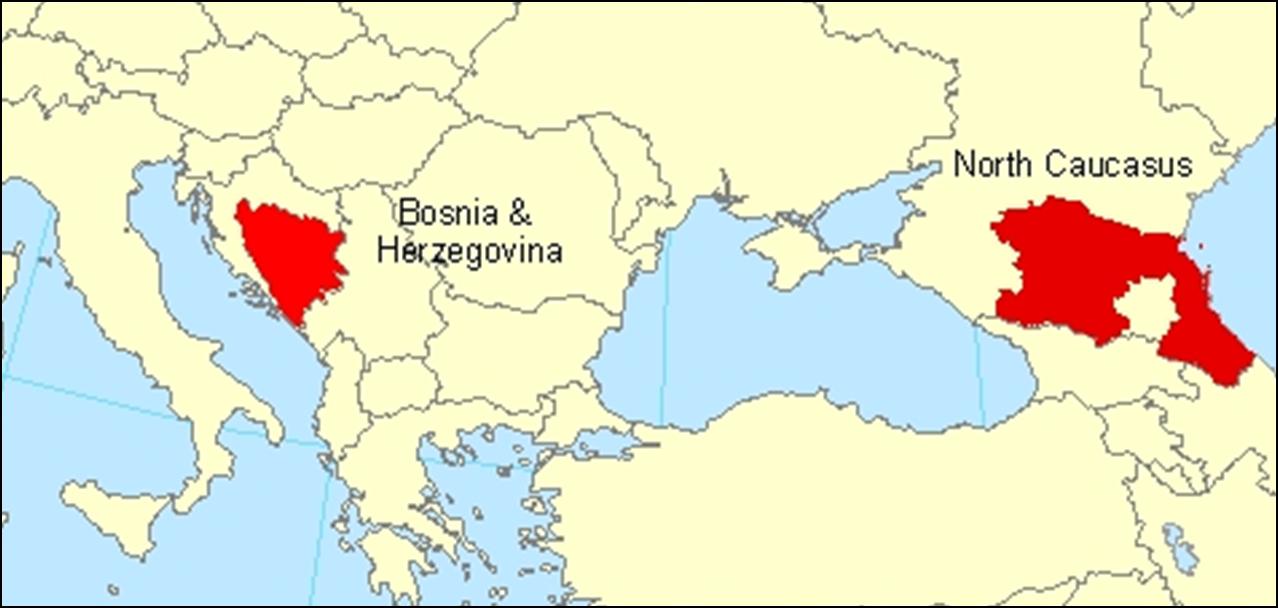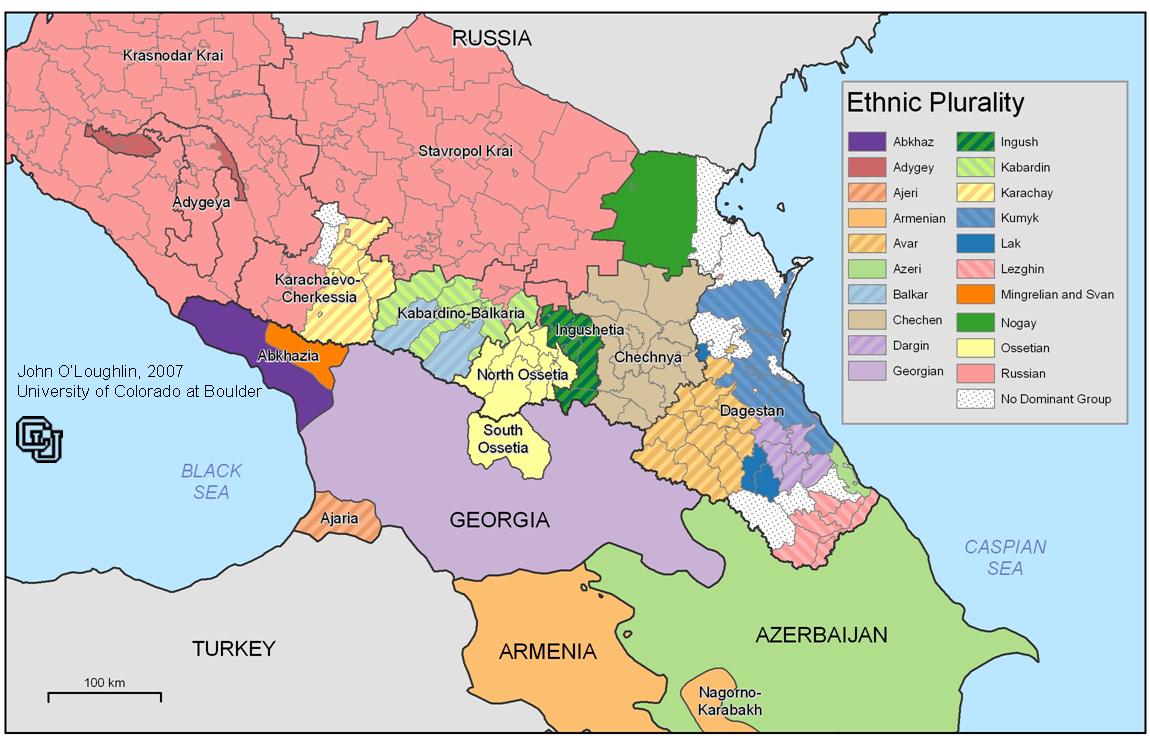
12 Apr 2010 update: The University of Colorado Arts & Sciences Magazine's March 2010 issue features our research project in their Geographies of war and peace article.
Project Description
This research explores civil war outcomes in Bosnia and in the North Caucasus area of Russia. Both regions experienced violent civil war in the 1990s consequent on the break-up of Yugoslavia and the Soviet Union. While fighting has ended in Bosnia, now under the protection of NATO forces, it continues in the North Caucasian republic of Chechnya, though other conflicts in the adjoining republics have ebbed. This inter-disciplinary project is framed by four inter-related questions:
I) What is the
character and localized distribution of economic, social, political, environmental and health outcomes of
the wars in the conflict zones?
II) What factors explain these distributions?
III) How can the application
of an integrated methodology of individual and aggregate data that relies on opinion survey, census,
governmental, and remote sensing data collection be operationalized in a spatial analysis across a variety
of scales?
IV) Are postwar developments in the former conflict regions promoting or retarding interethnic
harmony and democratic values, thus enhancing or reducing the prospects for long-term peace?
While many valuable works have been completed about the causes of civil war in political science, economics and ancillary disciplines, few studies have examined the consequences of violent conflict for the communities and societies in the war zone and contiguous regions. We concentrate on the public health effects (disease, health care, and differential medical accessibility), environmental and infrastructural effects (tracked using remote sensing imagery), political attitudes, refugee movement and settlement, ethnic cleansing and separation, social interactions, and economic adjustments after wars. We view civil war as the dynamic driving these multi-faceted developments.
Our starting point is 1991, before the wars in both Bosnia and the North Caucasus. Data comes from a variety of sources including a) census, electoral and other governmental data (including multilateral agency sources – e.g. UN, OSCE) over the past 15 years, at the smallest geographic units available, b) opinion and attitude surveys in the zones affected by war using a stratification of the micro-regions to identify the sampling points that will focus on inter-ethnic relations, migration histories, personal health histories, political preferences, and post-war options, and c) remote sensing imagery at primarily coarse and moderate resolutions to map the pre-war, conflict and post-conflict contexts, including infrastructural damage and reconstruction, vegetation changes, residential settlement, and population dynamics.
Our analytical methods focus on spatial statistics including exploratory spatial data analysis, geostatistics, data mining, social network analysis, and multilevel modeling. The collaboration involves a core team of geographers and political scientists who bring, separately and collectively, interdisciplinary interests and experiences to the project and who have a history of successful cooperation on previous NSF-sponsored projects. The team collectively is experienced in the methodologies of spatial statistics and remote sensing and also has field expertise in the two civil war contexts.
This page distributes recent writings, graphics, and maps.

